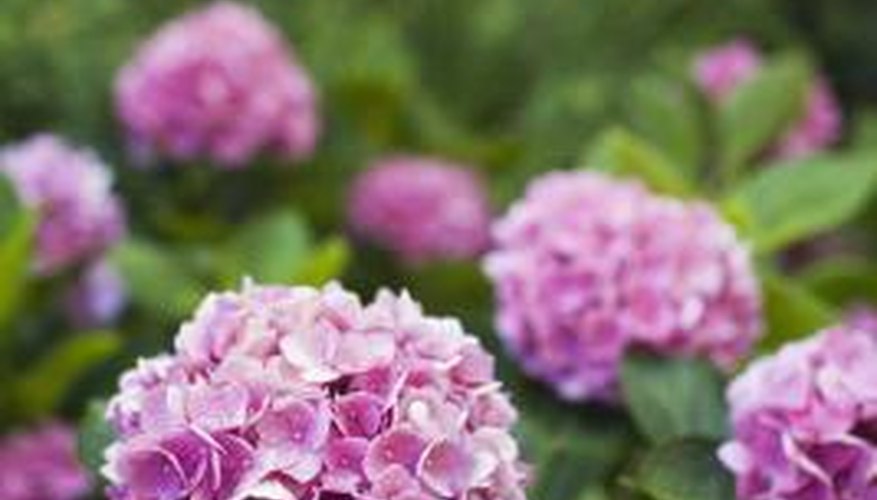Hydrangeas are large, lush garden shrubs, and grow best in cooler areas of the yard and country. These shade-loving plants live for up to 50 years with the right placement and care. They go through specific phases through the year.
Planting
Hydrangeas do best with warm-weather starts and growing seasons. Plant new hydrangeas in spring, after the last frost, in U.S. Department of Agriculture Growing Zones 4 to 8. Gardeners in USDA Zones 9 and 10, where winter temperatures stay relatively warm, can plant hydrangeas in fall as well. The Washington State University Extension of Clark County notes that hydrangeas thrive in USDA Zones 5 to 9, and reach longer lifespans in those zones.
- Hydrangeas do best with warm-weather starts and growing seasons.
- Gardeners in USDA Zones 9 and 10, where winter temperatures stay relatively warm, can plant hydrangeas in fall as well.
Growing Season
Hydrangeas grow and bloom from spring into fall every year, then enter winter dormancy. Blooming time always depends on hydrangea variety and weather. Macrophylla hydrangeas bloom from late spring to midsummer, Quercifolia hydrangeas bloom only in early summer, Paniculata hydrangeas bloom from late-spring to early summer and Arborescens hydrangeas bloom from late spring to early summer. These evergreen plants keep their foliage into winter, but lose their blooms at the end of their blooming season.
- Hydrangeas grow and bloom from spring into fall every year, then enter winter dormancy.
Pruning
Hydrangeas set their flower buds at different times of year and on different woods, and so require different pruning times. Arborescens and Paniculata hydrangeas set their blooms on the current season's wood. Macrophylla and Quercifolia hydrangeas bloom on wood from the previous season's growth. Prune the first group of hydrangeas in spring, before new growth starts. Prune the second group in midsummer, after their blooms fade. Incorrect pruning disrupts the next season's bloom.
- Hydrangeas set their flower buds at different times of year and on different woods, and so require different pruning times.
- Arborescens and Paniculata hydrangeas set their blooms on the current season's wood.
Care
All hydrangeas require specific conditions to accomplish growth, blooming and their potential lifespan. Plant the shrubs in partial, filtered or indirect light for best growth; hydrangeas thrive in morning sun and afternoon shade. Amend the soil with organic compost at planting for looser, richer and moister foundations. Water hydrangeas with 4 to 5 inches of water every week to keep their soil moist, and use mulch to maintain moisture. Amend the soil anew every spring with fresh compost additions for soil quality, and feed hydrangeas 8-8-8 or 10-10-10 fertiliser in March, May and July every year for continued growth.
- All hydrangeas require specific conditions to accomplish growth, blooming and their potential lifespan.
- Water hydrangeas with 4 to 5 inches of water every week to keep their soil moist, and use mulch to maintain moisture.
